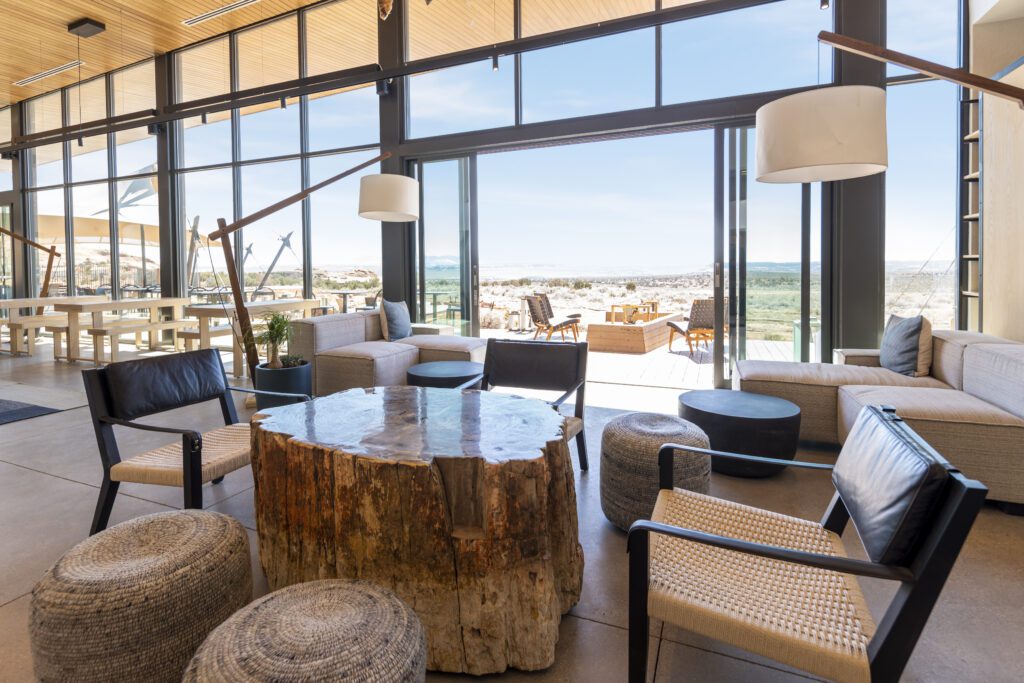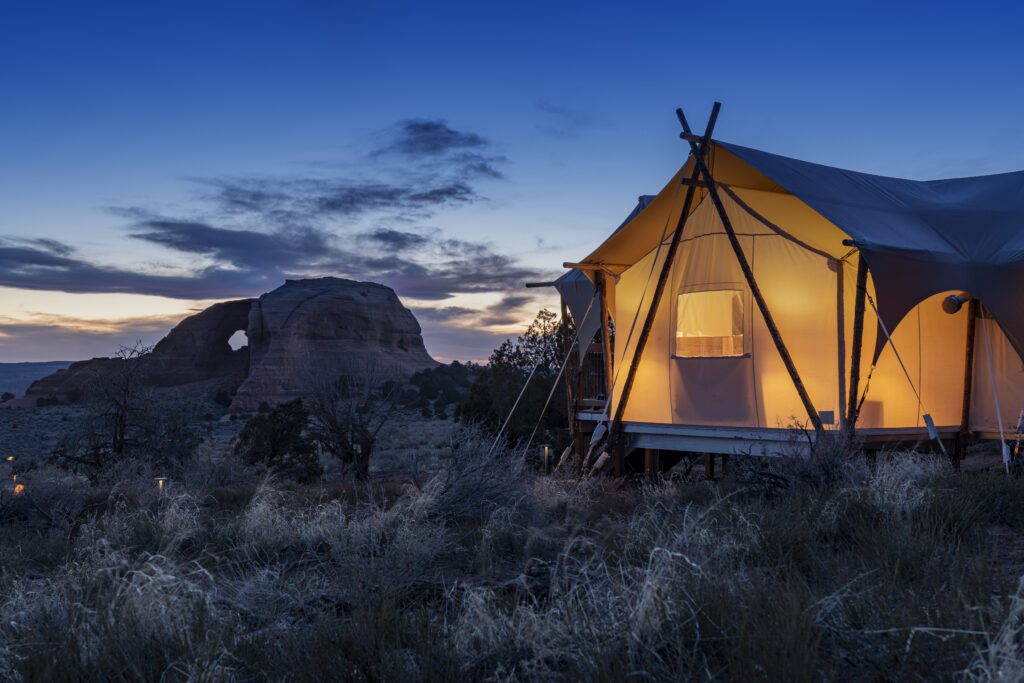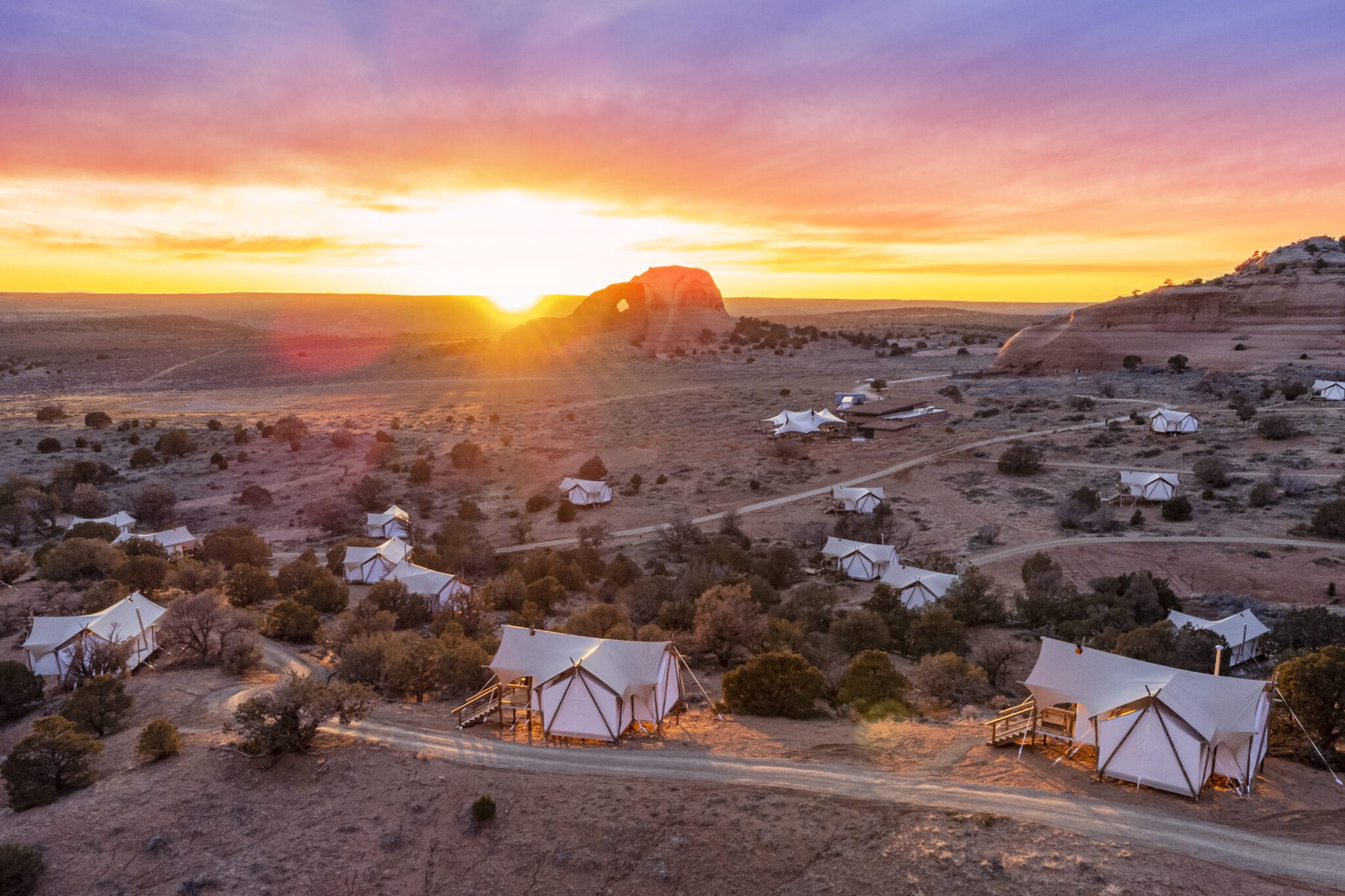Skift Take
Under Canvas's new ULUM brand is going after a well-heeled, outdoors-centric crowd and sees the opportunity sitting between the glitz of Amangiri and the more minimal brand the company created with Under Canvas.

On Experience
Colin Nagy, a marketing strategist, writes this opinion column for Skift on hospitality and business travel. On Experience dissects customer-centric experiences and innovation across the luxury sector, hotels, aviation, and beyond. He also covers the convergence of conservation and hospitality.
You can read all of his writing here.
“Glamping” is an unfortunate term that somehow has stuck. At first, it meant an elevated, non-austere form of camping in nature, characterized by not only hospitality projects but brands like Japan’s Snow Peak.
But as the category has matured, so has its reach and appeal: Brands like Autocamp have put together hyper-stylish, interesting footprints in Yosemite and Russian River. At the high end, Four Seasons has launched a tented camp product in Mexico called Naviva, and Aman has won accolades for its Camp Sarika, attached to Amangiri, created in collaboration with Luxury Frontiers.
Now, another brand is staking its claim on what it thinks is a sizable portion of the market: the elevated middle. Under Canvas started around 10 years ago in West Yellowstone, followed by interesting tented developments in nature areas with high tourist interest: the Great Smokey Mountains, Zion, and other places.
The initial iteration of the brand quickly found interest from guests but executing in this space is not easy. Outdoor destinations are not always well-serviced for several reasons: The challenges of operating in remote areas; the lack of experience in outdoor hospitality; variable weather and other unique circumstances; and the cost of development.
Now, with the launch of ULUM in Moab, Utah, the brand is creating a more elevated experience: Think electricity in tents, Aesop amenities, Pendleton blankets and more emphasis on the F&B delivered in purpose-built communal spaces. Launched in Moab within driving distance to Canyonlands airport and many of the natural parks, the brand represents Under Canvas’s evolving business model seeking to address a gap in the market and appeal to a higher-end customer.

The Gap in the Market
“The experience we provide is at the intersection of resort hospitality and spectacular outdoor destinations,” says Matthew Gaghen, CEO of Under Canvas. “We have seen, and now clearly are proving out, the demand for a safari-inspired experience with more of the traditional amenities of an upscale resort.”
Gaghen and his team are betting there’s an opportunity to create a new category of sorts – glamping for an audience that isn’t shy to splurge on a Mandarin Oriental or Four Seasons at times, but wants to connect to nature in a unique way.
Elevating Touchpoints
The difference from the baseline Under Canvas brand comes with more creature comforts, and a purpose-built communal space. There is a full-service restaurant; a temperature-controlled lobby lounge; and importantly for guests who are not exactly used to roughing it, optimized heating and cooling amenities in the guest tents.
The experience is still undoubtedly camping, and that is the appeal. Guests can smell the smoke from fires in the distance, huddle next to a wood burning fire in the rooms, and generally enjoy the feeling of being connected more deeply to the outdoors, via a piece of sturdy canvas rather than a built (and sensory isolating) concrete structure.

Building a “More Approachable” Luxury
The brand is targeting an audience that is well-heeled, but over-indexes on outdoor activities. Think guests in Arc’teryx parkas, higher-end Toyota 4Runners and Land Cruisers, and brightly colored Cotopaxi backpacks.
“Perhaps different from how an urban luxury hotel may be considered, we’re more about approachable luxury,” Gaghen says. “We’re not over prescribed or scripted. Luxury to us means creating the setting and opportunities to engage with other people in an environment that is truly luxurious in an outdoor and remote setting.”
The brand is also positioning itself to global travelers, and not just the drive-in or fly-in audience from neighboring Denver or Salt Lake City. The U.S. natural parks, particularly in Utah, are seeing a surge in international visitors post-Covid, and the bet is to be the best accommodation in town for those making a once-in-a-lifetime journey from Europe, India, or China.
Attracting the Right Staff
Seasonal, high-end staffing is the key challenge for brands in remote areas. There’s no shortage of Teva-clad outdoor adventurers and people using hospitality gigs to fuel their outdoor exploits, but finding people with the higher-end hospitality approach requires a different touch. Gaghen suggests in a highly competitive market they need to offer something different. “Despite the seasonal nature of our business, we’ve also invested in more year-round employees to maintain consistency of experience and strong leadership, supported by a year-round corporate team.” The brand has provided no-cost, year-round housing for the employees, and also shuttle SUV service to the property, and continues to iterate on finding their own approach to hospitality, grounded in an outdoor-savvy local staff.
Teething Challenges
ULUM has seen a tremendous amount of interest from families and children traveling during school breaks, juxtaposed with well-heeled couples seeking a tranquil or romantic getaway. This is an obvious tension point that shows up in reviews and the guest experience: A couple on a retreat frustrated at the children hopped up on s’mores doing laps around the dipping pools.
Gaghen acknowledges the evolving product-market fit, and says the brand is using post-checkout surveys and making on-the-fly adjustments “to make sure we can accommodate them while preserving the tranquility and sanctity of the experience.” Also, the glamping sell is not for everyone: a higher-end hotel guest might be surprised by having to shiver through an unexpected cold snap, or coax embers out of a fidgeting fire. And no matter how any detailed steps a brand takes, there will be those for whom camping isn’t the thing.

But my bet is that the core ULUM guests will be self selecting, opting for a more polished outdoor experience mapped closely to nature. The ULUM plot itself sits in view of Looking Glass Arch, with views across Canyonlands National Park. The brand has found an interesting pocket in the market: Nature is literally placed in the forefront of the experience, but with enough detail and thought to make a new offering for guests.
Gaghen says the new brand will be core to the growth of Under Canvas in the future. “We have a pipeline of sites in the works for future ULUM locations, driven by guest feedback and where we know we can deliver extraordinary scenery and a variety of opportunities for outdoor exploration in the most sought-after destinations,” says Gaghen. “We plan to build the brand over the next several years – we’re not done yet.”
Have a confidential tip for Skift? Get in touch
Tags: camping, glamping, On Experience
Photo credit: ULUM Moab overlooks Looking Glass Arch in Moab, Utah. ULUM
